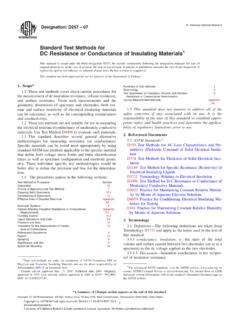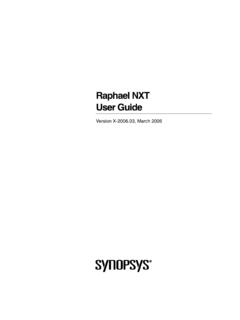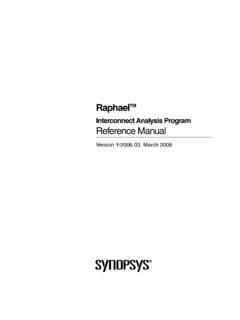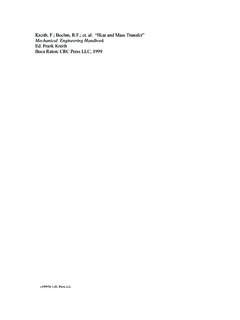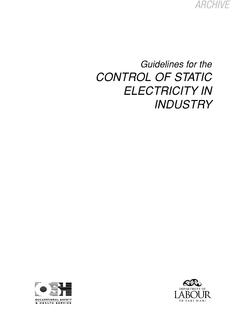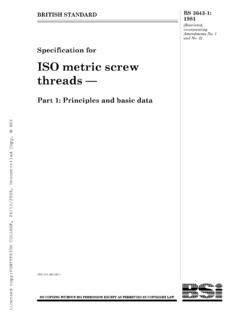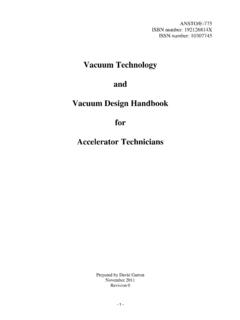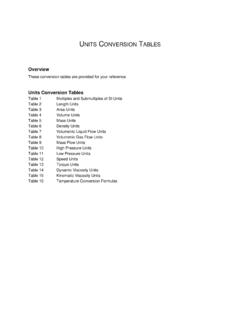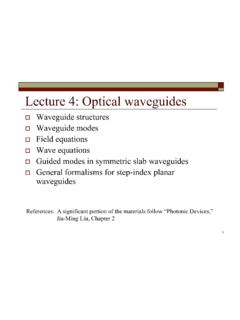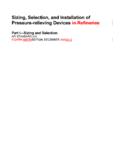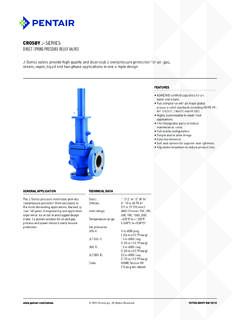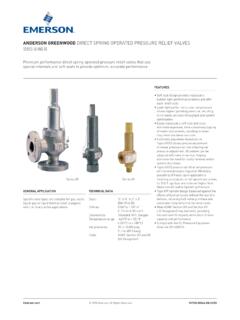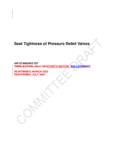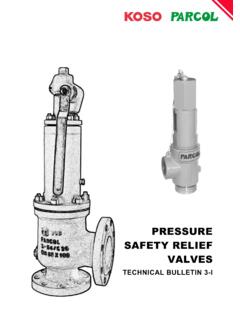Transcription of Pilot-operated safety relief valves: A simple, effective ...
1 COPYING AND DISTRIBUTING ARE PROHIBITED WITHOUT PERMISSION OF THE PUBLISHERP ilot-operated safety relief valves : A simple, effective plant | Scott, J. R., GE Energy, Houston, Texas; MacKinnon, N., GE Energy, London, UKReplacing spring-loaded valves can help increase efficiency and outputKeywords:A never-ending quest for plant operators is how to wring more output from the existing infrastructure and budget withoutcompromising safety or product quality. The challenge is daunting, but a relatively simple upgrade can help plant operatorstake a big step toward meeting replacement of direct spring-operated pressure relief valves (PRVs) with Pilot-operated safety relief valves (POSRVs) canhelp plant operators streamline maintenance processes, reduce maintenance costs, address common valve performanceissues, maintain safety and potentially increase article explains how valve replacement can be beneficial.
2 It also clarifies some common misconceptions about POSRV sand identifies factors that should be considered when specifying Pilot-operated safety relief EFFICIENCY AND INCREASED THROUGHPUTA POSRV relieves an overpressure situation by actuating a pilot valve that is plumbed to a main valve. The pilot valve opensand closes the main valve in response to system pressure , and all of the relieving capacity flows through the main pilot valve receives vessel pressure through a sensing line attached at a point below the seating surface of the main valveor at a point directly on the vessel.
3 The pressure travels through the pilot and pressurizes the dome. The surface area of thedome is greater than the seating surface, which is the area under the disc. Since Force = pressure 3 Area (F = P 3 A), theforce pushing down on the main disc is greater than the force pushing up. With a POSRV, as system pressure increases, seattightness also increases. By contrast, the seating forces of a direct spring-operated valve are essentially a simple force to close(spring) against a force to open (system pressure ). This difference means that the pilot valve has greater seat tightness athigher system operating the pilot and main valves work together to protect the system, the system operating pressure can be closer to thevalve s set pressure than what is possible with a spring-loaded valve; 98% of set pressure is possible while staying withinAmerican Society of Mechanical Engineers (ASME) guidelines, vs.
4 90% of set pressure with a spring-loaded valve. Operatingcloser to set pressure allows plant personnel to maximize system efficiency while maintaining safety and reducing loss ofproduct through seat leakage. As shown in Table 1, a POSRV s set pressure can be higher than that of a comparable spring-loaded valve, helping increase safety relief valves : A simple, effective plant upgrade | of 72/14/2012 2:17 PM VERSATILE PROBLEM-SOLVERSPOSRVs are powerful problem-solvers and can help system designers overcome a variety of challenges commonly faced inhydrocarbon processing facilities.
5 They are particularly appropriate choices for applications that include the of costly fluids. These fluids could include liquid natural gas (LNG), gasoline or another end product; orlubricants, cleansers or other additives used in the production process. The greater seat tightness delivered by POSRV sreduces the potential for these valuable fluids to be lost to of dangerous fluids. Such fluids create a potential breathing or explosion hazard. Again, seat tightness is thekey. By reducing the potential for leaks, POSRVs help ensure safety by preventing these fluids from being released into over fugitive emissions.
6 Increasingly strict regulatory guidelines have made controlling fugitive emissions amajor focus for plant operators. Leaking valves are one of the leading causes of fugitive spring-operated valves operate at something akin to a low boil. As system pressure begins to approach the valve s setpoint, the valve will start to simmer as the disc gently rides on top of the valve seat. Although this is how the valve isintended to operate, the fugitive emissions caused by this slight leakage may not be acceptable in some applications. APOSRV s tighter seal eliminates the of significant back pressure .
7 It is, of course, common in hydrocarbon processing facilities for a PRV to exitinto a header system where multiple valves are piped together. A prime example of this setup is a valve that is vented to aflare. This configuration will create superimposed variable back pressure when a valve relieves and generates pressure in theshared outlet pipe. Typically, the solution has been to use a direct spring-operated bellows are an ideal alternative to direct spring-operated bellows valves since a POSRV s set pressure does not increase withthe addition of back pressure (provided that the pilot is balanced against the effects of back pressure ).
8 Valve stability isgreater with a POSRV because the back pressure cannot act on the back side of the disc to hold the valve closed. As a result,POSRVs are suitable for use in applications with 60 65% variable back pressure . In some applications, POSRVs may beused with back pressures up to or exceeding 80%.A POSRV can also be a more cost- effective choice in these applications. Although the up-front cost of a spring-loaded valvemay be lower, bellows are relatively fragile and are generally costly to replace when damaged, potentially creating lead-timeissues during shutdowns and resulting in higher life-cycle pressure drop exists.
9 A variety of maintenance and construction considerations can lead plant designers to createfacilities that have piping with multiple bends, narrow pipes or long runs of piping. High inlet pressure drops can result,causing a direct spring-operated valve to chatter or flutter and leaving the system at risk. However, a POSRV with remotesensing will protect the system without the need to re-pipe. Placing the sensing line in an area of the vessel that is unaffectedby pressure drop allows accurate operation of the main valve (Figs. 1 and 2). The American Petroleum Institute (API) andASME Section VIII Appendix M recommend a maximum inlet pressure drop of 3% of set safety relief valves : A simple, effective plant upgrade | of 72/14/2012 2:17 PM Fig.
10 1. This piping configuration has a pressure drop, potentially greater than 3%. Note: Valve piping and vessel not to scale. Fig. 2. The POSRV shown here senses pressure at the vessel rather than at the valve inlet piping. Note: Valve piping and vessel not to application in which these high pressure fluctuations are commonly found is a reciprocating compressor in a operating at high capacity, these compressors have a tendency to surge, creating pressure variations that can cause adirect spring-operated PRV to chatter. A POSRV, on the other hand, will not chatter under these and weight are major considerations.
